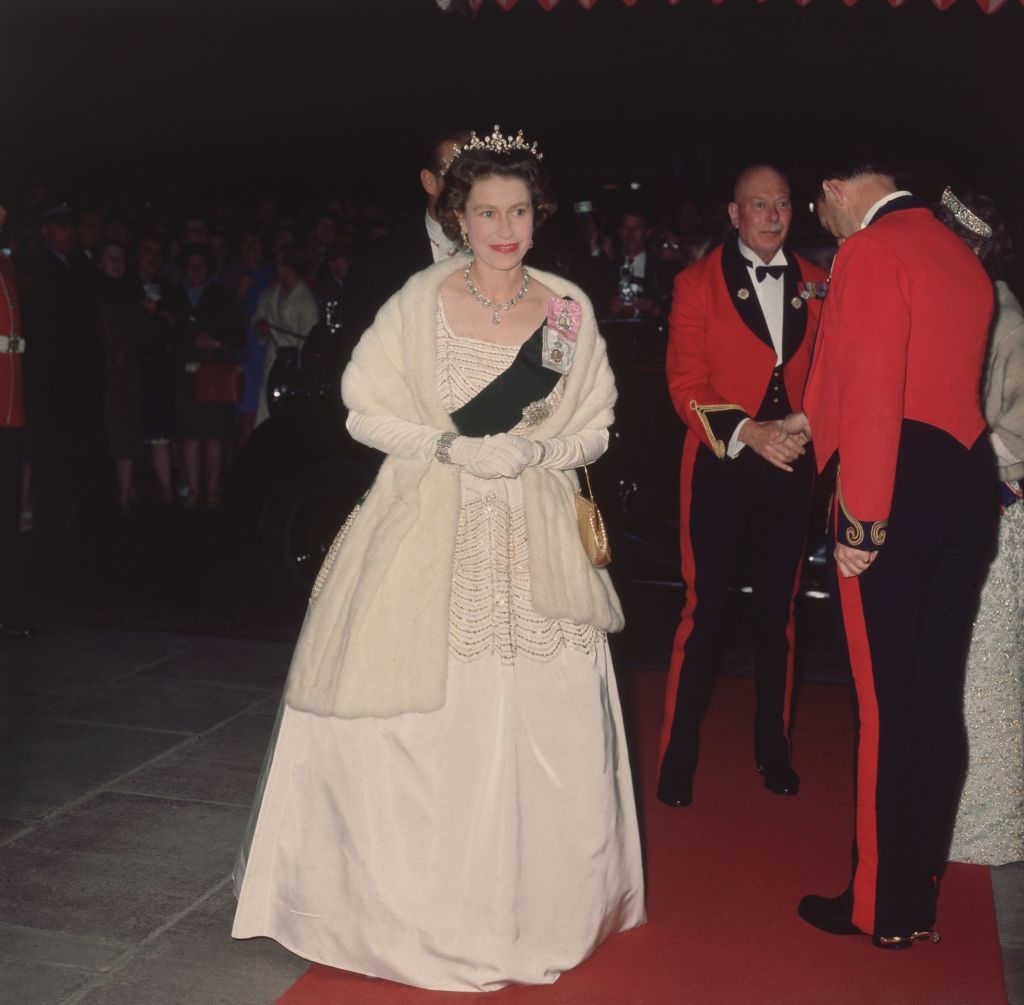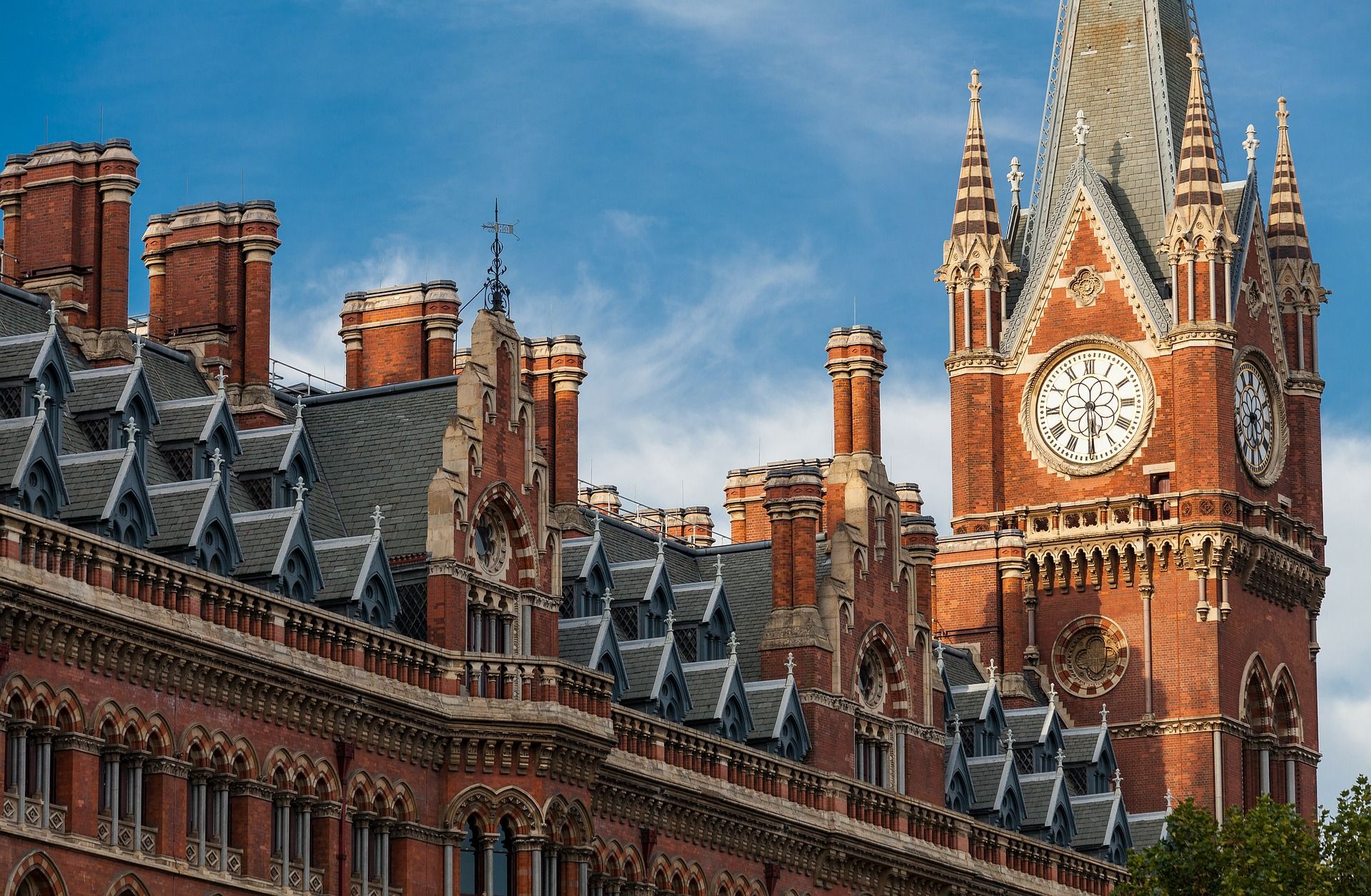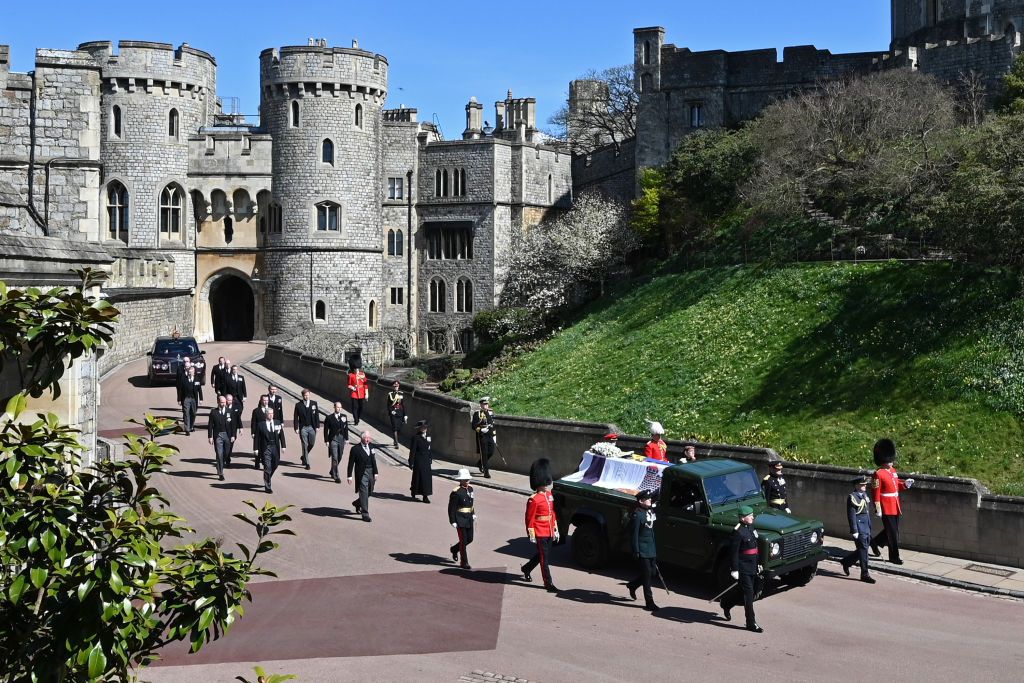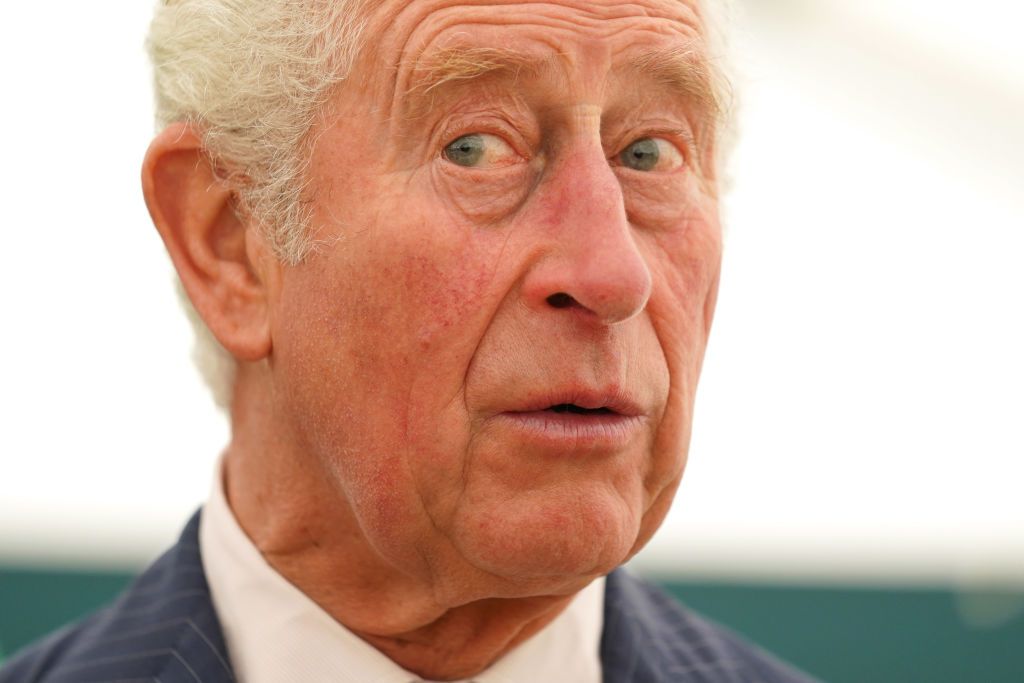They’ve only been planning her death for the last 60 years
The plan for what will happen when the Queen dies has been in the works since the 1960s.
It covers everything from when Prince Charles will be crowned to how the royal corpse will be transported back to Buck House.
The latest release of tedious detail, which the media went wild over last month, concerned exactly how church bells across Britain will be muffled on the day of her death and funeral. More of that later.
This thrilling revelation followed a rather rocky start to the year for Her Majesty. Her Covid-diagnosis back in February left her “tired and exhausted”, she told a fellow Covid-sufferer, whose dad and brother had died of the virus.
“This horrible pandemic. It’s not a nice result,” she said during a a virtual visit to Royal London Hospital.
In April, she pulled out of Thursday’s Maundy Day church service, which she’s only ever done after giving birth, or when on tour. The Queen also missed the Easter Sunday service at St George’s Chapel, in Windsor.
This week, Buckingham Palace announced the Queen will not attend this year’s State Opening of Parliament due to her “episodic mobility problems”. This will be the first time she has missed the constitutional ceremony since 1963.
She will miss it for the first time in 59 yearshttps://t.co/HtaEhCFUoG
— JOE (@JOE_co_uk) May 9, 2022
We’re all praying for her to make it through – at least until the bank holiday scheduled to mark her Platinum Jubilee in June. But while it’s impossible to speculate when that oh-so-sad day might come, what we do know is it that it will trigger a funeral operation of almost unprecedented scale.
Details of what Operation London Bridge entails first started leaking out back in 2017 when The Guardian published a long read on it that went viral. That was followed by a further deep dive in Politico in 2021, after their journalists obtained documents laying it all out.
So, here is everything you need to know.
When did these plans begin?

Most people see their thirties as the start of their adult life but back in the 1960s, when the Queen was around this age, government officials were already making plans for her death.
As you can imagine, there is tonnes of info, but we’ve narrowed down the most interesting bits for you.
You will find out the Queen is dead – even if you’re high in the sky
The prime minister, the cabinet secretary and a number of other ministers and officials will be the first to hear about the Queen’s death, within hours of it even happening.
As if in some kind of reenactment of a James Bond scene, civil servants will ring the PM and tell him “London Bridge is down”.
Ministers and senior civil servants will get an email from the cabinet secretary. And when it’s been received, they want flags across Whitehall to be lowered to half-mast – in just 10 minutes. Of course, there have been arguments about how this will even be logistically possible, but don’t you worry, officials say it will definitely go to plan.
So, when do we get the call? Well, apparently, members of the public will receive the news through an “official notification” from the royal household. The royal family’s website, the GOV.UK page and all government social media pages will display a black banner.
And even if you are thousands of feet above ground, embarking on a holiday and trying to disconnect from the news, the pilot will inform you and the fellow passengers on your flight.
The PM will then be first to make a statement confirming her death.
What will be going on for us on the day?

A national minute’s silence will take place on the day the Queen dies – kicking off a 12-day mourning period across the country.
Religious buildings will ring their bells, and are due to do so with muffles to create a solemn sound. But many churches have realised their muffles are rotten after not being used for 70 years since since King George VI’s death. As a result, muffles are the new toilet paper, with churches panic buying these leather wraps in a bid to get ready for the big day, Mail on Online reports.
Later on the day of her death, there will later be a “spontaneous” remembrance service held at St Paul’s Cathedral in London.
Depending on how posh you are the Queen’s death could seriously scupper your plans. If she dies during Royal Ascot, the event will be completely scrapped. The Marylebone Cricket Club is even said to hold insurance for a similar outcome if she passes away during a home test match at Lord’s.
When it comes to entertainment, The National Theatre will close if the news breaks before 4pm, but they’ll stay open if not. All games, such as golf, will be banned in the royal parks. That last one cuts deep.
When will Charles become king?
The PM will hold an audience with Prince (soon-to-be-King) Charles on same the day his mum dies. At 6pm, Charles will deliver a broadcast to the nation.
The day after the Queen dies, the Accession Council will gather at St James’ Palace to officially crown him king. Hundreds of people, including the PM, will be there, and the dress code is strictly black tie.
A couple of days later, he’ll attend a service at Westminster Hall, where he’ll receive the motion of condolence and a long speech will be made about the Queen’s life. Then Charles will embark on a UK tour – visiting the Scottish parliament, receiving a second motion of condolence in Northern Ireland and then attending a service in Cardiff.
What will happen to her body?

It all comes down to where she dies.
The unpredictable answer means there are many operations in place. So, if she dies at:
a) Sandringham – her body will be carried by royal train to St Pancras in London, where her coffin will be met by the PM and cabinet ministers.
b) Balmoral in Scotland – Operation Unicorn will be activated, meaning her body will again be carried down to London by royal train if possible. If this does not happen, Operation Overstudy will be triggered, meaning her coffin will be transferred by plane.
Regardless, the Queen’s coffin will return to Buckingham Palace.
When will the Queen’s funeral be?
Not only does the Queen’s death plan get its own name, but the day she dies does too.
D-Day will be the title given to the day the Queen dies, according to Politico. And every day after that will be referred to as D+1, D+2 and so on.
The Queen’s funeral is expected to take place at Westminster Abbey, 10 days after her death. So, her funeral will take place on D+10 (quick maths).
Unsurprisingly, she’s set to see a big turn out, with over 2,000 guests in attendance. But with that comes the need for significant security, and it’s expected to be one of the most heavily-protected funerals of all time.
There will be a national two-minute silence at midday, and she’ll be buried at the King George VI Memorial Chapel in Windsor.
What about the procession?

Now, the procession can’t just simply go ahead – there has to be a rehearsal, which of course gets its own name, Operation Lion.
This will take place on D-Day+4, followed by the real thing on D-Day+5, when the Queen’s coffin will be carried from Buckingham Palace to the Palace of Westminster. There will then be a service in Westminster Hall following the coffin’s arrival.
So, what happens in the meantime?
The Queen will then lie in state at the Palace of Westminster for three days, in another operation codenamed Feather.
Her coffin will lie on a raised box known as a catafalque in the middle of Westminster Hall. This will be open to the public for all but one hour of each day and half a million people are expected to turn out to say their goodbyes.
Apparently, tickets will be issued for VIPs so they can have a time slot.
There is a lot of concern about how many people from across the globe will flock to London to pay their respects. One memo warned of a worst-case scenario, in which London becomes “full” for the first time ever. This would mean accommodation, roads, public transport, food, policing, healthcare and basic services would be stretched to breaking point.
Will I get a day off work?

Finally, we get to the good stuff. And the answer is that you could – potentially, and eventually – get two.
The day of the Queen’s funeral will be a day of national mourning. If the funeral falls on the weekend or an existing bank holiday, an extra bank holiday will not be granted. And if the funeral falls on a weekday, employers won’t be obliged to give staff the day off, so we’ll leave that chat for you…
The London Stock Exchange will close on the day, as well as most banks in the UK. This could cost the country’s economy billions of pounds, but obviously we’ll worry about that, along with the cost of living, later.
The subsequent coronation of King Charles will be a national holiday.
Will it mess up my TV programmes?
If you’re hoping for a hungover sofa day featuring takeaway and daytime TV, then you could be disappointed.
The BBC will suspend all programmes except for BBC One, which will be covering her death. And while other channels aren’t required to cancel shows or interrupt schedules, there is a chance they will.
If the Queen dies in the night, her death won’t be announced until 8am. If you turn on the TV then, you’ll be greeted with a portrait of her, along with the national anthem in the same fashion as when Princess Diana died in 1997.
TV won’t be much fun for the rest of the 12-day mourning period, at least on BBC channels, where all comedy programmes will be suspended. Plus, all news readers will be dressed in black tie.
But don’t worry because whatever happens, we’ll still have Netflix, where you can bingewatch The Crown and other royal fodder like the hysterically awful, Diana The Musical. Yes, really.
What about the radio?
If you listened to the radio when Prince Philip died back in April last year, you’ll probably remember there wasn’t much actual speaking from the presenter, just very sad music.
Well, you can expect something very similar when the Queen dies – potentially even sadder.
Commercial radio stations have a system called an ‘Obit light’ – it’s blue and lights up when a national catastrophe has happened. When it flashes, DJs know to play inoffensive music and switch to the news within a few minutes.
And if you thought you were organised with your afters playlist, these guys have got it down to a tee – with ‘Mood 2 (sad)’ or ‘Mood 1 (saddest) lists ready to play.
While presenters try their best, efforts to announce royal deaths in unison haven’t always gone to plan. There was the time somebody forgot to press the Obit light button properly, which meant they failed to hear news of the Queen Mother’s death. And more iconically, then there was the awkward moment Radio 1’s Dance Anthems tuned into the news of Prince Philip’s death just before the drop…
Just wait for the beat to drop… pic.twitter.com/OiG8RVUONu
— Richard Smith (@richardavsmith) April 9, 2021
Let’s hope Her Maj gets to go out with a similar banger.
Related stories:
- False report of Queen Elizabeth’s death could be a mix-up about Queens Of The Stone Age
- Queen cancels virtual engagements because of covid symptoms
- Prince Andrew makes secret nighttime visits to the Queen






































